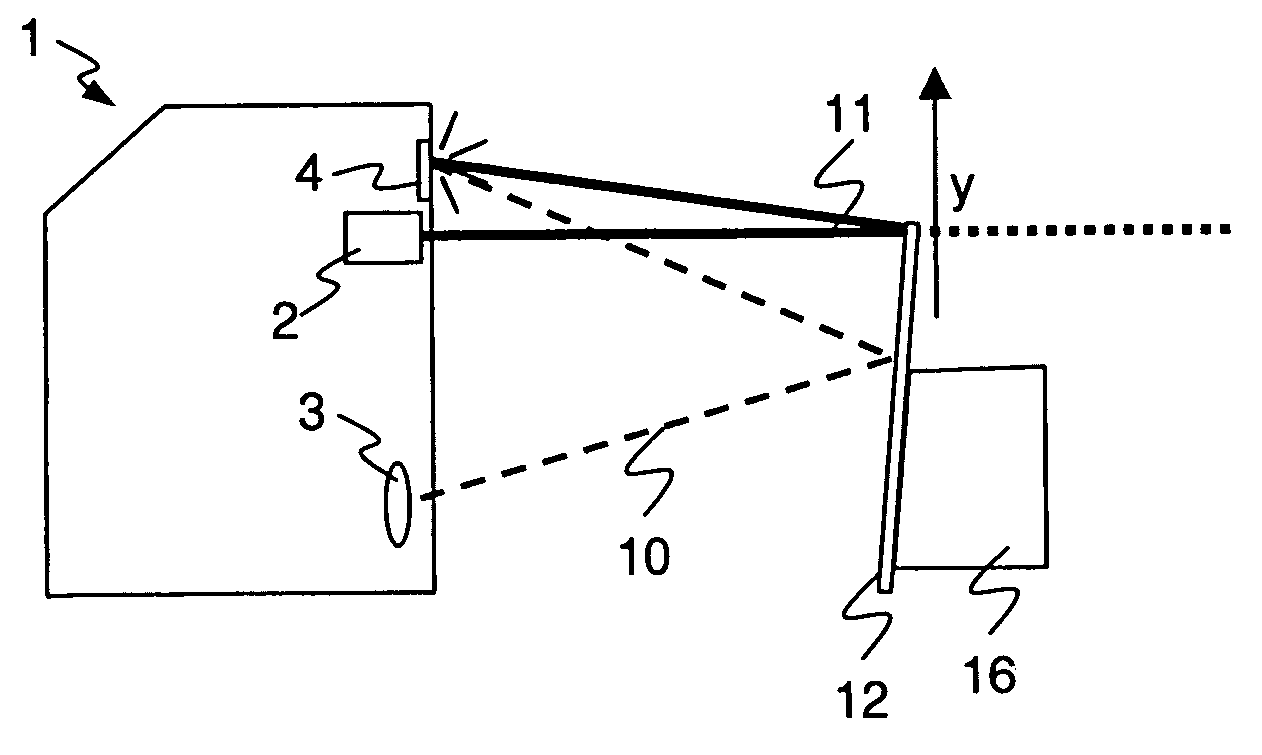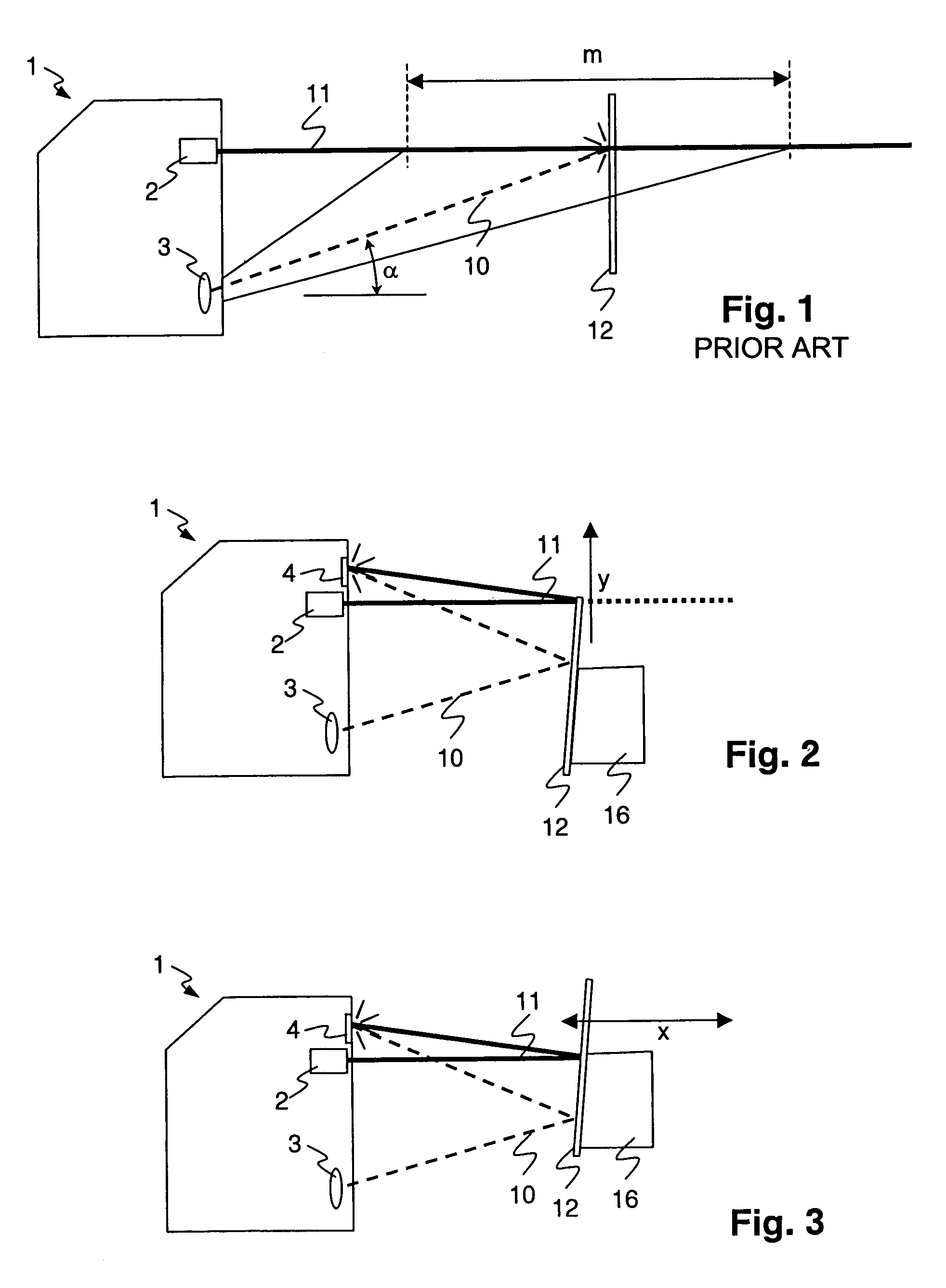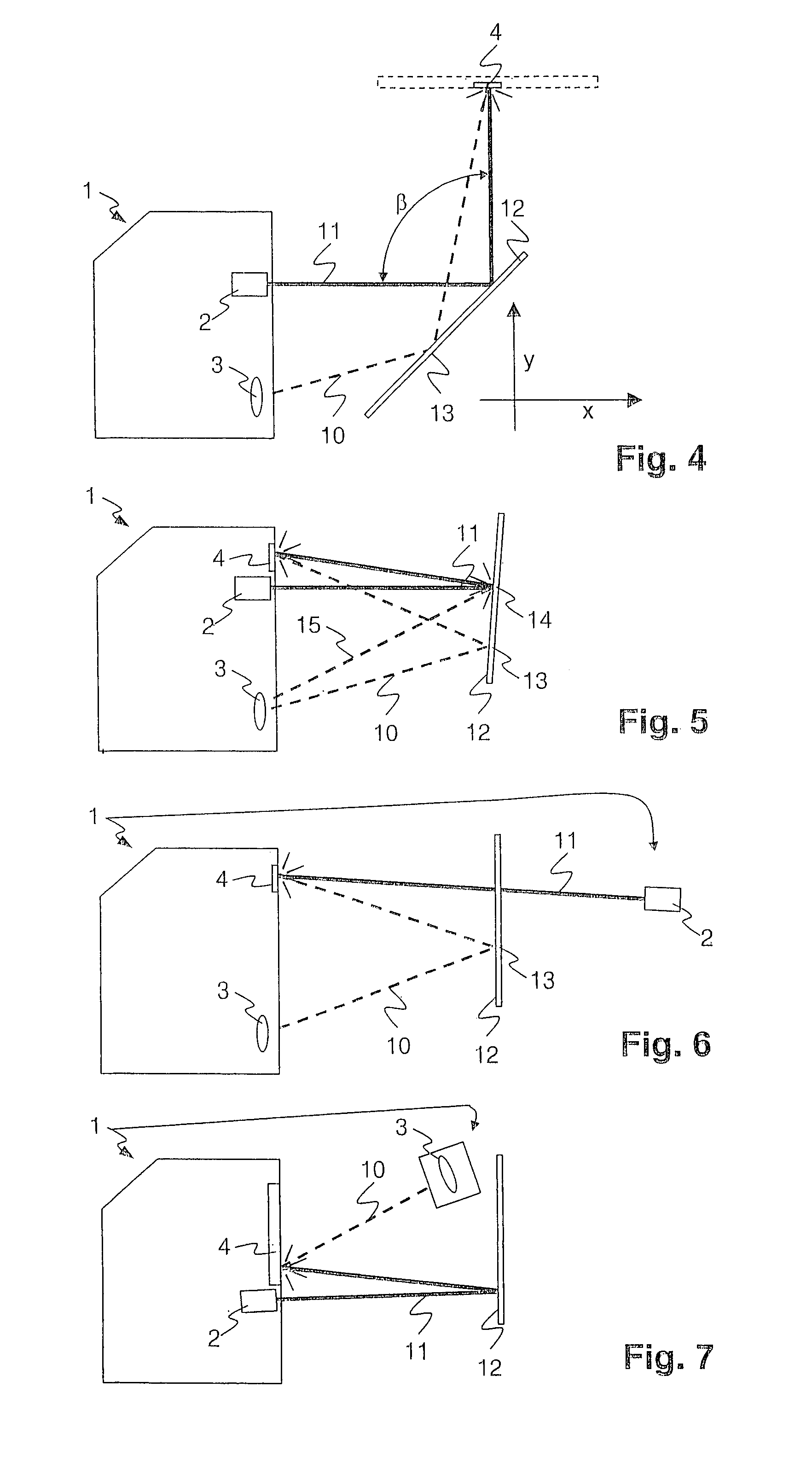Device and method for the optical detection of objects
- Summary
- Abstract
- Description
- Claims
- Application Information
AI Technical Summary
Benefits of technology
Problems solved by technology
Method used
Image
Examples
Embodiment Construction
[0023]Initially, it is noted that in the In the Figures the same reference characters designate the same or analogous elements.
[0024]FIG. 2 illustrates an embodiment of the invention, which is able to be utilised, when the invention is to be used for the detection of the moving of the “mirror” into a defined field. An optical sensor 1 comprises a light source 2 for the generation of a laser beam or light beam 11 and a light receiving means. The light receiving means comprises a receiving lens system 3, light-sensitive elements of a known type, and integrated or external means of evaluation. With the means of evaluation, an angle of incidence of a light beam and, from it, a presence or a distance of an object are capable of being determined. The optical sensor 1 comprises a reflector 4 exhibiting diffuse reflection. In the application example under consideration, a movement of an article with a mirroring surface 12 into the light beam 11 is to be detected. For this purpose, the objec...
PUM
 Login to View More
Login to View More Abstract
Description
Claims
Application Information
 Login to View More
Login to View More - R&D
- Intellectual Property
- Life Sciences
- Materials
- Tech Scout
- Unparalleled Data Quality
- Higher Quality Content
- 60% Fewer Hallucinations
Browse by: Latest US Patents, China's latest patents, Technical Efficacy Thesaurus, Application Domain, Technology Topic, Popular Technical Reports.
© 2025 PatSnap. All rights reserved.Legal|Privacy policy|Modern Slavery Act Transparency Statement|Sitemap|About US| Contact US: help@patsnap.com



